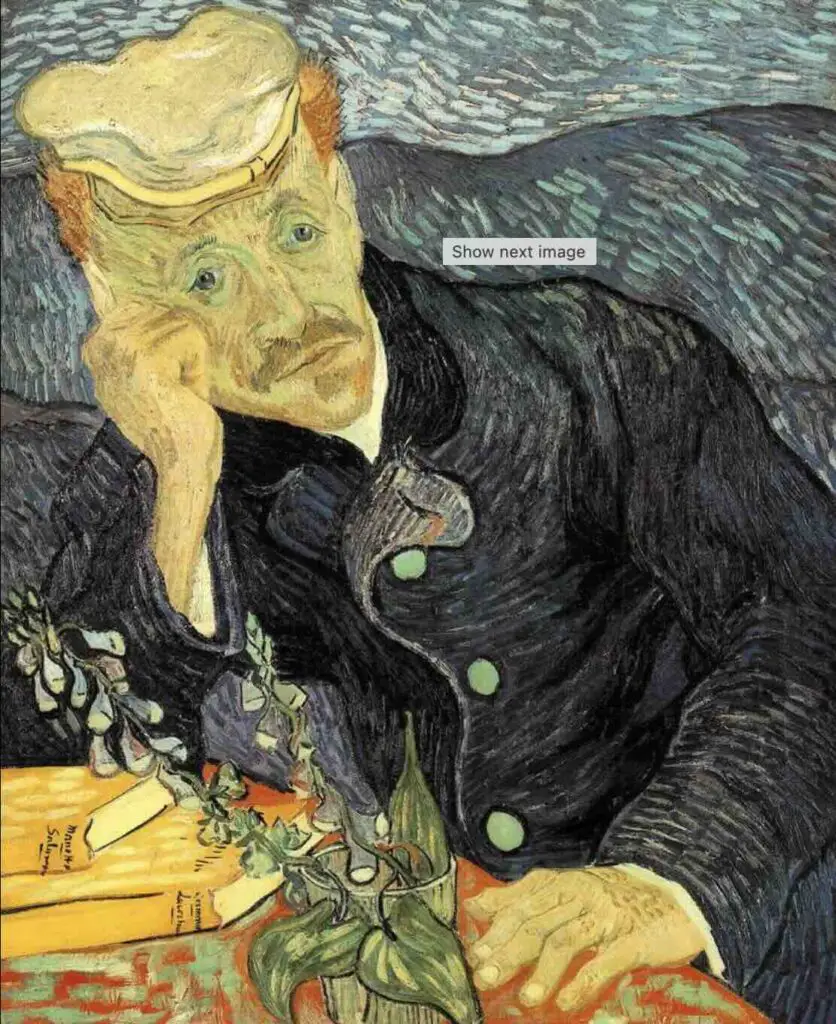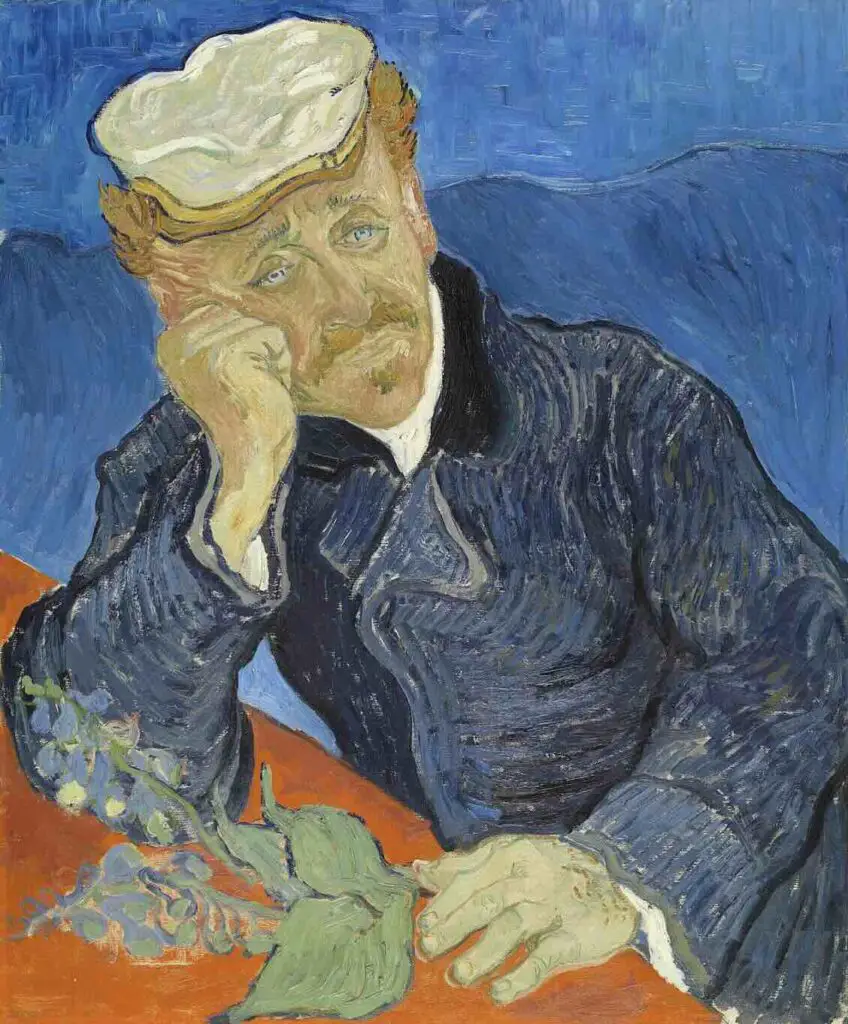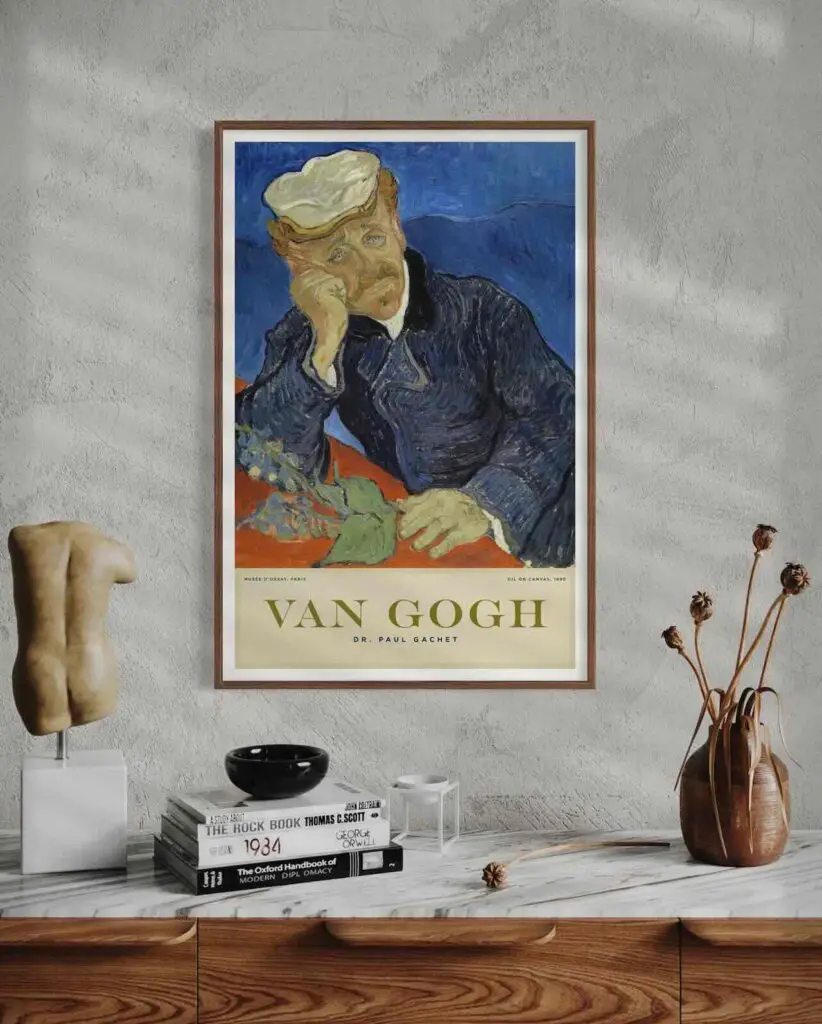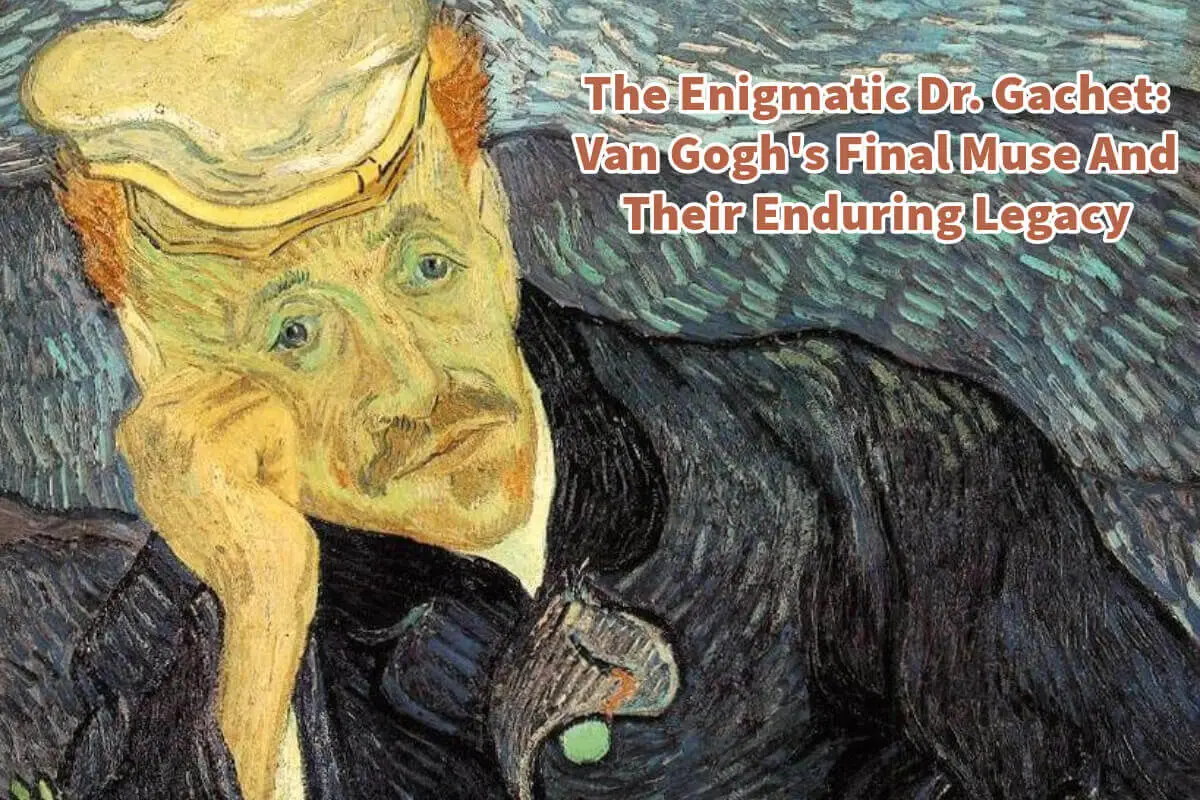One of Vincent van Gogh’s most acclaimed works is the portrait of Dr. Gachet. However, what often goes unnoticed is the significant personal connection between the artist and his subject. Beyond its artistic importance, this portrait represents a more profound, shared understanding between Van Gogh and Dr. Gachet.
Vincent van Gogh, synonymous with post-impressionist brilliance, left an indelible mark on the art world. Among his vast artworks, the “Portrait of Dr. Gachet” stands out for its artistic excellence and the intriguing story behind its subject. Read on as will delves into the life of Dr. Paul Ferdinand Gachet, exploring his relationship with Van Gogh and the profound impact he had on the artist’s final days.
Table of Contents
- Who Was Dr. Gachet
- The Portrait Of Dr. Gachet
- Gachet’s Family And Legacy
- The Enduring Impact Of Dr. Gachet And Van Gogh
- Dr. Gachet’s Role In Preserving Van Gogh’s Legacy
- Related Questions
Who Was Dr. Gachet
Dr. Gachet was not your typical physician, born in 1828 to a wealthy manufacturing family in Lille. His journey into the art world began as a teenager and flourished alongside his medical studies in Paris.
His thesis on melancholy perhaps predestined his path toward artists, a group notoriously plagued by emotional struggles.
Gachet And The Art World
Dr. Gachet’s affinity for art was a pastime and a passion that saw him amass one of Europe’s largest collections of impressionist art. His friendships with artists like Pissarro, Renoir, Manet, and Cezanne were both professional and deeply personal.
These relationships uniquely positioned him as a patron and participant in the art scene.
The Meeting With Van Gogh
Van Gogh’s introduction to Dr. Gachet, facilitated by his brother Theo, was pivotal. The artist moved to Auvers-sur-Oise in May 1890, seeking solace and medical supervision.
With his deep understanding of art and melancholy, Gachet was an ideal companion for Van Gogh during his turbulent final days.
Dr. Gachet: More Than A Doctor
Beyond his medical practice, Dr. Gachet was an artist and engraver known under the pseudonym Paul van Ryssel. His home in Auvers became a hub for artists, and he often inspired them to experiment with new techniques, including etching, which Van Gogh tried under his guidance.
The Portrait Of Dr. Gachet
Van Gogh’s “Portrait of Dr. Gachet” is more than a painting; it’s a narrative. Painted in June 1890, it encapsulates the doctor’s gloomy demeanor, which Van Gogh profoundly identified.

The painting’s vivid colors and expressive style reflect the artist’s state of mind and his view of the doctor as a kindred spirit.
Details And Symbolism In the Painting
The portrait, rich in symbolism, features Dr. Gachet resting his head on his hand, a pose reminiscent of melancholy. The foxgloves in the painting not only add a burst of color but are also a nod to Gachet’s medical background, as they are used in heart medication.
The Cultural Impact Of The Portrait
“Portrait of Dr. Gachet” has become one of Van Gogh’s most famous and discussed works. Its value extends beyond the art market; it is a piece analyzed and interpreted in various cultural and academic contexts.
The painting is often cited in discussions of the relationship between mental health and creativity, and it continues to inspire new generations of artists and art enthusiasts.
The Lost Second Painting Of Dr Gachet
Van Gogh’s second painting of Dr. Gachet, missing since the 1990s, adds a layer of mystery. It was last known to be in the possession of a Japanese industrialist, whose subsequent financial ruin led to rumors about the painting’s fate, including the sensational theory of it being buried with him.

The disappearance and mystery surrounding the second portrait of Dr. Gachet only add to the intrigue of Van Gogh’s work. The theories and rumors that have arisen over the years, from possible forgery to rumored burial, have kept this artwork in the public imagination, much like the Mona Lisa’s enigmatic smile. The lost portrait has become a symbol of the mysteries that often surround great art and artists.
The Role Of Forgery And Imitation
The authenticity of the second painting is shrouded in controversy, with some speculating it could be a copy made by Dr. Gachet or his son. However, Van Gogh’s letters confirm he painted two portraits of the doctor, and copying artworks was standard at the time for learning purposes.
Gachet’s Family And Legacy
Dr. Gachet’s personal life, especially his relationships with his children Marguerite and Paul Fils, is another intriguing aspect. Van Gogh painted Marguerite in 1890, and rumors of a romantic relationship between them, though unsubstantiated, add to the lore surrounding Van Gogh’s time in Auvers.
Dr. Gachet’s Artistic Pursuits
Dr Gachet’s contributions to art extended beyond collecting and modeling. His creations, notably a sketch of Van Gogh on his deathbed, reveal his artistic talent.
His practice of creating herbal remedies links back to the foxgloves in the portrait, symbolizing his dual role as a healer and artist.

The Enduring Impact Of Dr. Gachet And Van Gogh
The “Portrait of Dr. Gachet” is not just a masterpiece of art; it represents the complex interplay of two fascinating individuals at a critical juncture in art history. Van Gogh’s depiction of Dr. Gachet offers a window into their shared world of art, melancholy, and understanding.
As we unravel the layers of this portrait, we uncover more about the artist, his muse, and the era that shaped them both.
Dr. Gachet’s Influence On Van Gogh’s Art
The influence of Dr. Gachet on Van Gogh’s work during his final months cannot be overstated. In this short period, Van Gogh produced a flurry of paintings that displayed a remarkable depth of emotion and skill.
Empathy and understanding. Gachet offered gave Van Gogh a sense of companionship and understanding, rare in his turbulent life. This relationship was instrumental in allowing Van Gogh to work with intense focus and passion, producing some of his most memorable works.
Van Gogh’s Perception Of Dr. Gachet
Van Gogh’s letters to his brother Theo reveal much about his perception of Dr. Gachet. He described the doctor as “sicker than I am, I think, or shall we say just as much.” This statement highlights the deep, almost mirrored melancholy that connected the artist and the doctor.
This shared understanding of mental anguish forged a strong bond between them, making Dr. Gachet an ideal subject for Van Gogh’s expressive brush.
Dr. Gachet’s Role In Preserving Van Gogh’s Legacy
After Van Gogh’s death, Dr. Gachet played a significant role in preserving his legacy. His extensive collection of impressionist art, including Van Gogh’s works, helped keep the artist’s work in the public eye.
The doctor’s advocacy for Van Gogh and his art was crucial in establishing Van Gogh’s posthumous fame. Ultimately, the “Portrait of Dr. Gachet” is more than just a depiction of a man. It represents the complexities of the human soul, the depths of friendship, and the intertwining of life and art.

The story of Dr. Gachet and Vincent van Gogh is a poignant reminder of the power of empathy, the importance of understanding mental health, and the enduring influence of art on our lives. As we look at this painting, we see not just the face of Dr. Gachet but a mirror into the soul of Van Gogh and, perhaps, a reflection of ourselves.
Through this exploration of Dr. Gachet’s life, his relationship with Vincent van Gogh, and the mysteries and meanings embedded in the “Portrait of Dr. Gachet,” we gain a deeper appreciation for this masterpiece. It stands as a testament to the enduring power of art to capture the complexities of human emotion and the unspoken bonds that connect us.
Anita Louise Art is dedicated to art education, great artists, and inspiring others to find and create their art. We love art that uplifts and inspires. #ArtToMakeYouSmile! #ArtToMakeYouHappy!
If you are interested to see any of my art, you can find out more by clicking here. If you are interested in what inspires me and my paintings, you can discover more by clicking here.
We have a free newsletter and would love you to be part of our community; you can subscribe to the newsletter by clicking here. I would be happy to talk to you if you have any questions. You can reach me, Anita, by clicking here.
Subscribe to our Anita Louise Art YouTube Channel filled with great videos and information by clicking here.
Join us for our podcast “5 Minutes With Art.” Spend 5 minutes a week with us to discover and learn about great art and artists. You can find out more about our podcast by clicking here.
Related Questions
How Was Leonardo da Vinci Able To Master So Many Different Professions?
Leonardo da Vinci is a man known to have had many different titles and professions during his lifetime. He was able to master this profession because he was a genius. But more than just being a genius, Leonardo is also self-educating and never stops learning. He had an insatiable amount of curiosity about all kinds of subjects.
By clicking here, you can learn more by reading How Was Leonardo da Vinci Able To Master So Many Different Professions?
What Can We Learn From Leonardo Da Vinci?
Leonardo da Vinci was a philosopher; being a philosopher means that you want to seek wisdom. Leonardo was one person who tried to seek knowledge or enlightenment in his life. Leonardo was an active observer and learner of the human body, human behavior, and nature.
By clicking here, you can learn more by reading What Can We Learn From Leonardo Da Vinci?
Was Leonardo da Vinci A Philosopher?
Leonardo da Vinci was a philosopher; being a philosopher means that you want to seek wisdom. Leonardo was one person who tried to seek knowledge or enlightenment in his life. Leonardo was an active observer and learner of the human body, human behavior, and nature.
By clicking here, you can learn more by reading Was Leonardo da Vinci A Philosopher?


